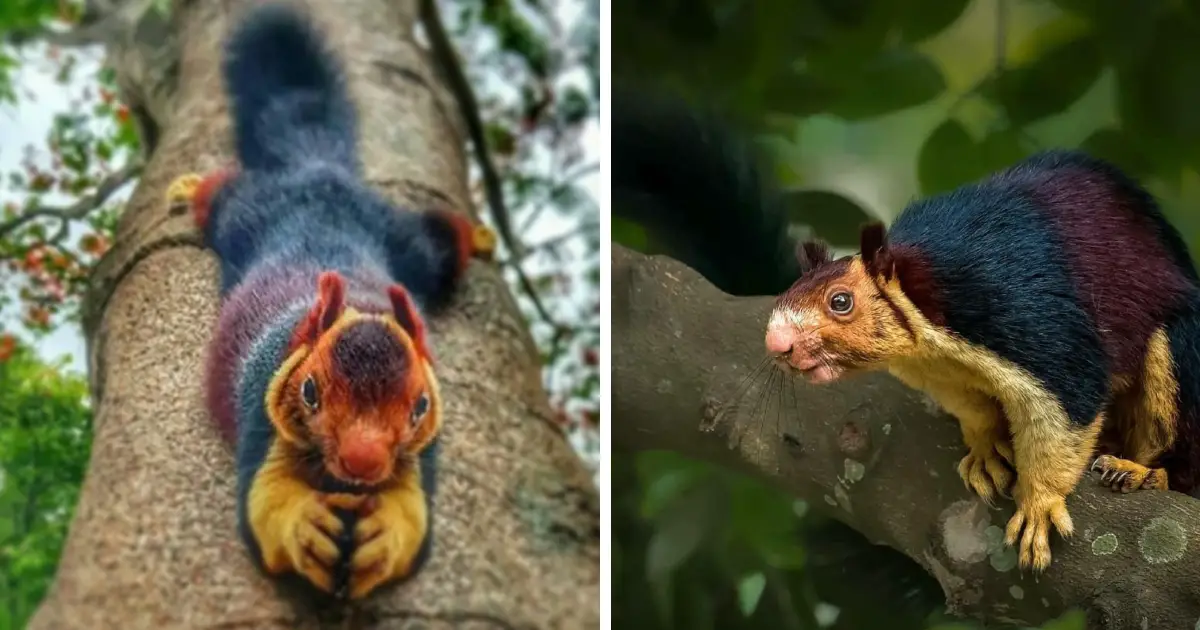When one thinks of squirrels, they likely picture a small rodent known for stealing bird feeder seeds, rather than an exotic animal. Despite varying in color, such as grey, black, or American red, they all have a similar appearance and are commonly seen by North Americans. However, in the deep Indian forest, squirrel sightings offer a strikingly dissimilar appearance, perhaps even seeming unreal.
View this post on Instagram
The Indian forests are home to the Malabar squirrel, or Indian giant squirrel, which is the world’s largest squirrel. These charming creatures, with their multicolored coats, present a unique and rare sight. In fact, when wildlife enthusiast and squirrel expert John Koprowski first encountered a Malabar squirrel in 2006, he initially believed he had discovered a new species of primate due to their elusiveness.

“In the shaded understory of a dense forest, the patchy colors and dark hues are a great adaptation to avoiding detection,” squirrel expert John Koprowski said. “But when you see these in the sunlight, they show their ‘true colors’ and beautiful pelage.”
View this post on Instagram
The Malabar squirrel is a unique subspecies of squirrel that differs significantly from the ones commonly seen in backyards. These squirrels are giant in comparison, with a body size twice that of the common squirrel, reaching up to 36 inches from head to tail.

However, it is not their size but their stunning coat that makes them exceptional. Their fur is a breathtaking combination of purple, black, brown, and even orange, providing them with the best camouflage against natural predators. The Malabar giant squirrel did not choose this multicolored coat, but it serves as a natural defense mechanism.

But prof. Koprowski also believes these multicolored giants might actually be part of a prehistorical group of squirrels.
“They’re part of a group of squirrels that is pretty ancient,” he said. “They’re a unique evolutionary group that’s been here a long time, which is a good thing.”
Meet the Malabar squirrel!

